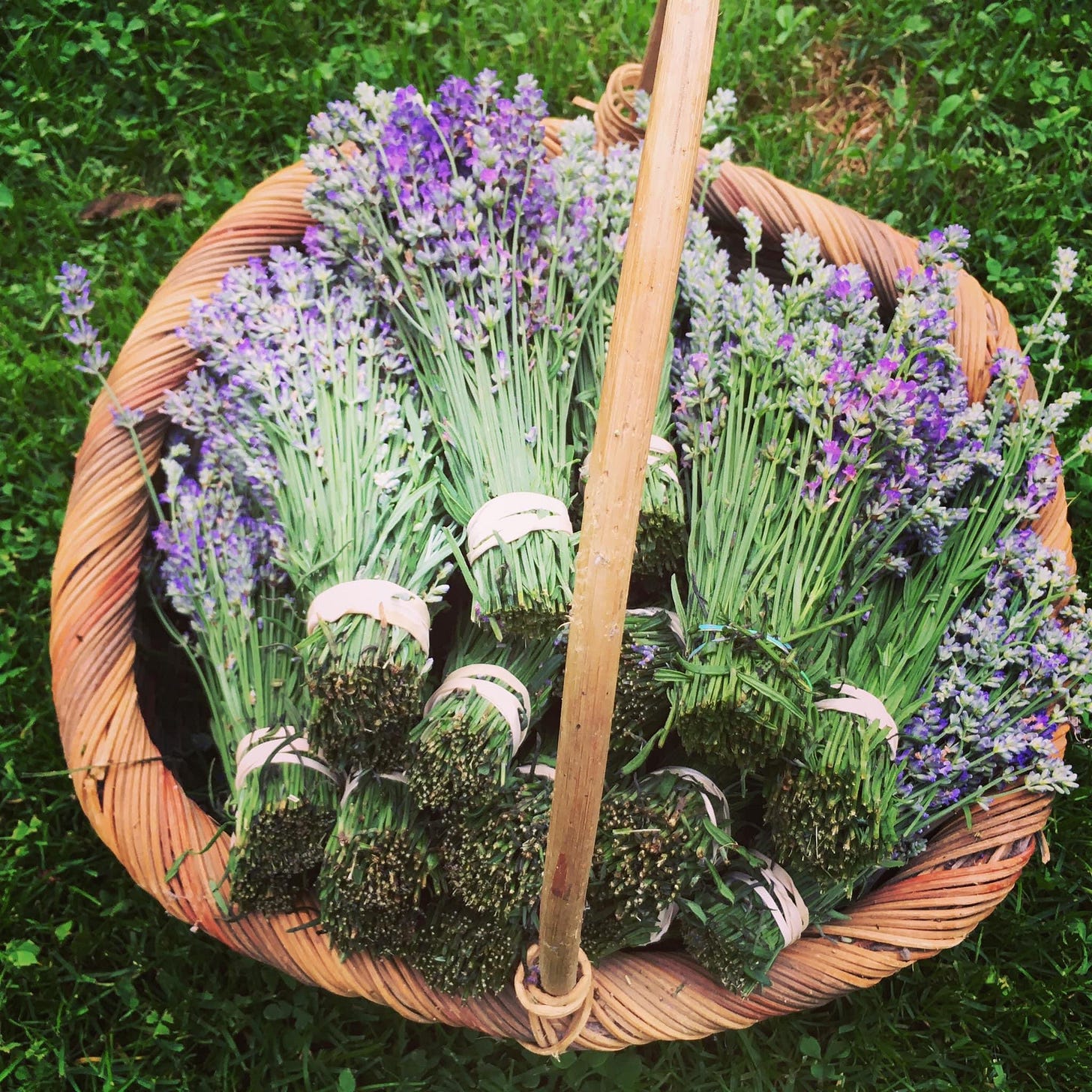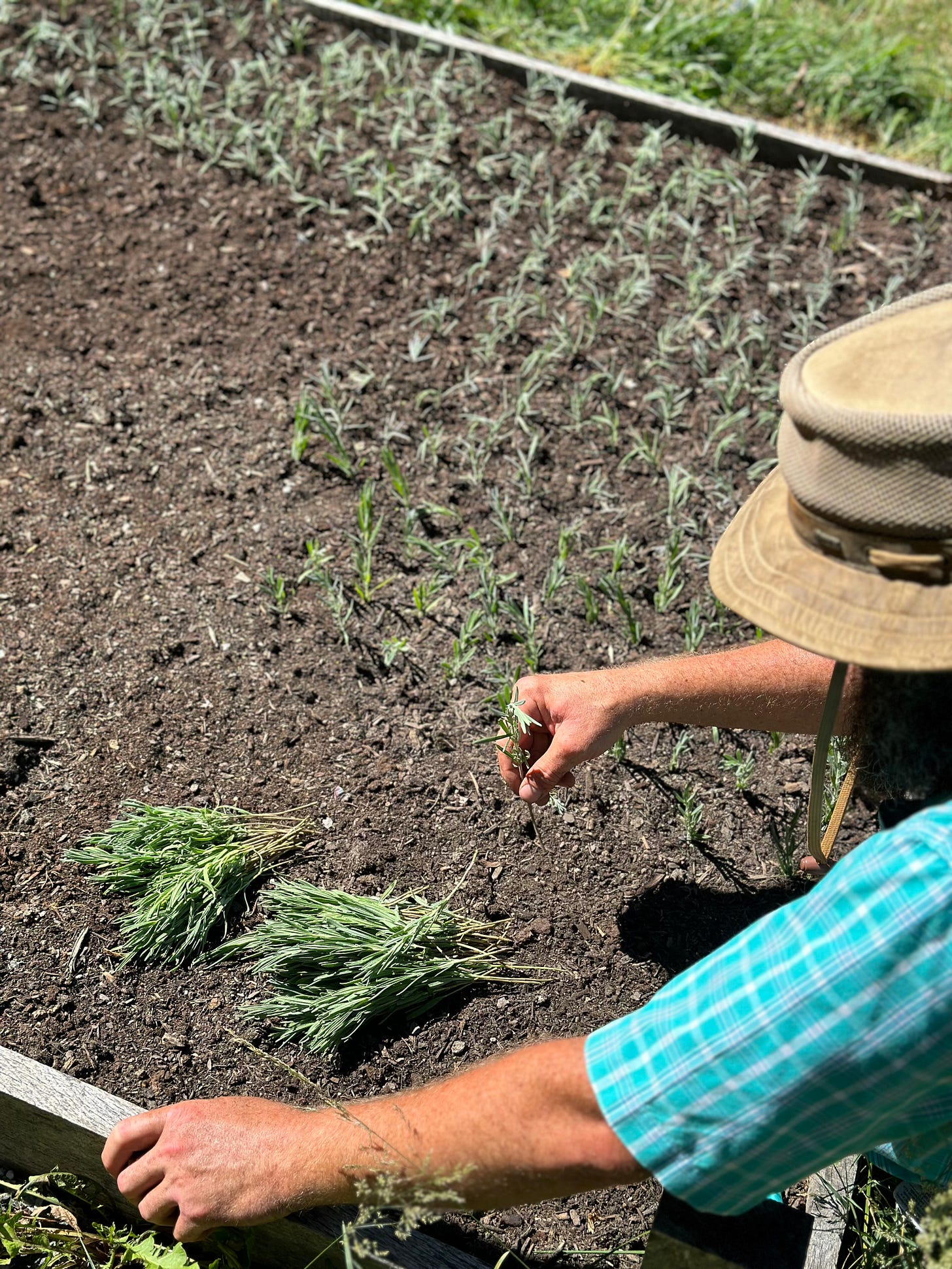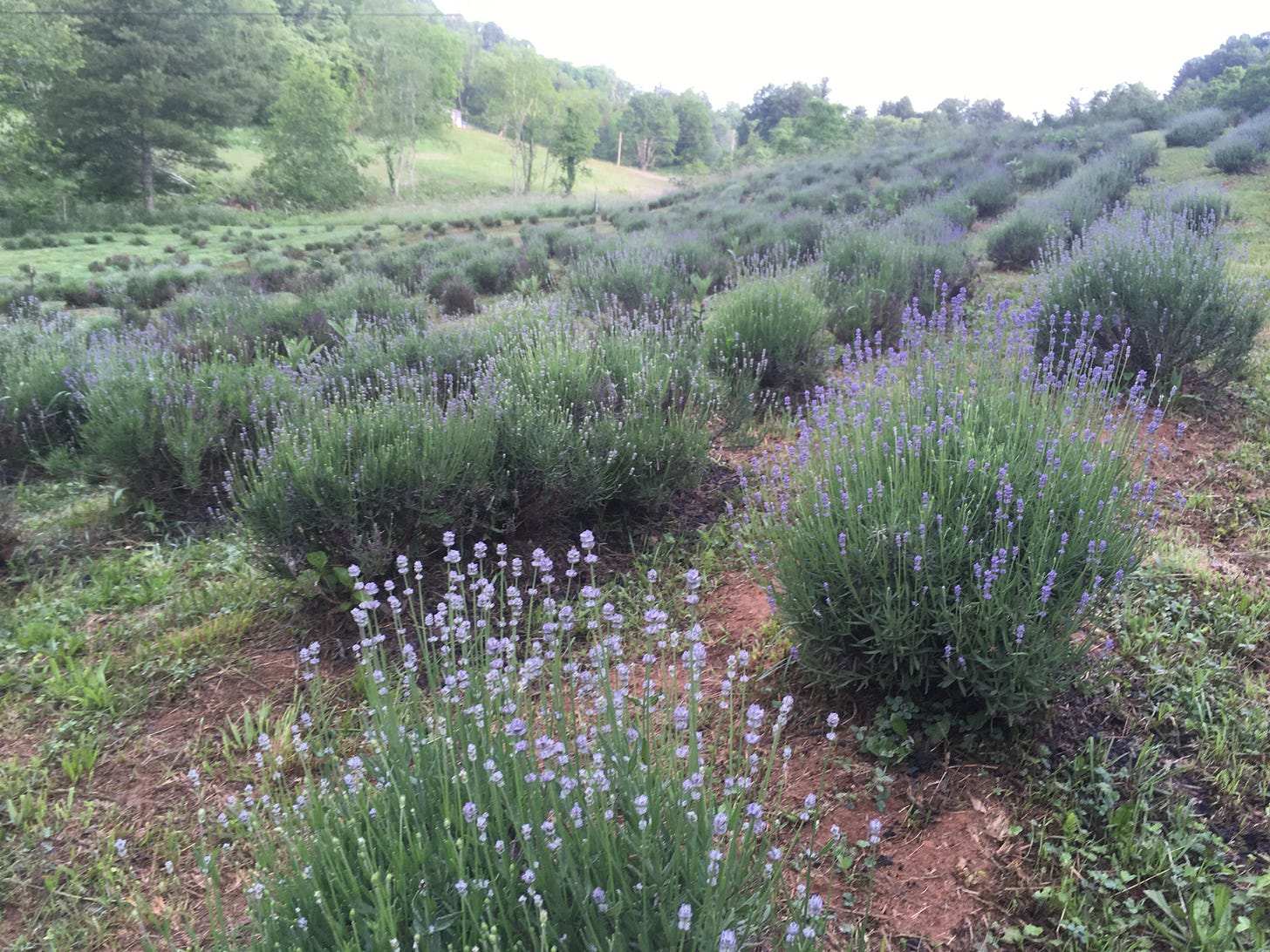Propagation of lavender from cuttings is the most widely accepted way to propagate for at least a couple of good reasons: (1) Lavender has many, many heterozygous genetic traits and will not grow true to seed, and (2) germinating lavender seed can be tricky. Lavender seed will germinate, but growers have to meet lavender’s particular germinating needs in order to be successful. In this post, I’ll be talking about propagating with cuttings, which was what I do almost exclusively.
It is currently late July at the time I am writing this article, so it is too late for the summer solstice round of cuttings and too early for the late summer round of cuttings. I usually try to gather my first round of cuttings in early to mid June and my second round of cuttings in mid to late August. I am in the mountains of North Carolina near Asheville, so these dates will differ depending on what part of the world you are in. That is part of the fun of farming — figuring out what works for you in your region and when it works.
I guess these summertime cuttings would be considered softwood cuttings, and my method is fairly simple. I take cuttings as you see in the video above, and I put them in raised beds.
The bed is mixed with fairly nutrient-rich soil and peat moss. The peat holds moisture, which I want for root promotion, but it is also too acidic. I balance this out by adding a little lime to the bed, which brings the pH to a more neutral or slightly alkaline place. When the young plants are transplanted out of the raised bed, however, the soil needs to be nutrient poor and well-drained. Staying too long in nutrient-rich soil will cause lavender to get leggy and weak — and it will eventually kill it. Staying too long in soil that retains moisture after the roots are developed will cause root rot and kill lavender fairly quickly. But the nutrients and the peat seem to help the roots get started, so that’s why I do it, after years of trial and error. I never leave the lavender in these beds for longer than nine or ten months.
Water, water, water. For the next four to six weeks, the raise beds need to be watered twice per day — once in the morning and once in the evening. When you begin to see new growth, the roots have arrived! Then, you can begin backing off of such frequent watering.
I typically leave the baby plants in the raised bed through the winter, until April of the next year. At that point, I pot them and sell them, or put them in our lavender field.
Happy growing, everyone! May your breezes ever be filled with the sweet fragrance of lavender!








Share this post